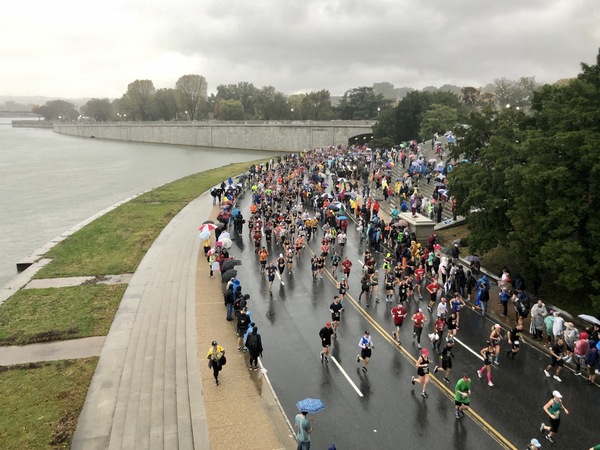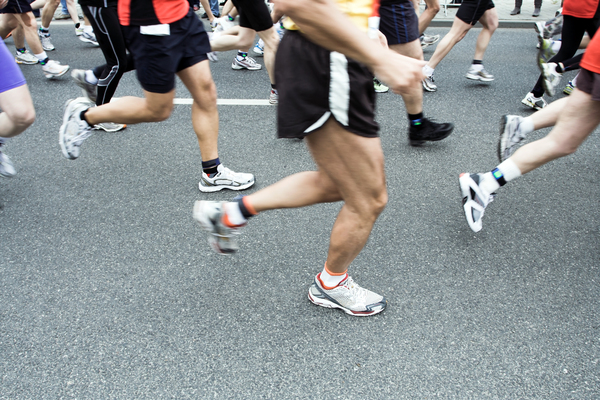Running in America: a popular and exciting activity
Sports and recreational runners can be found in our lives wherever you go: on city streets, in parks, on sports fields and even along a country track. There are more than 47 million runners in the U.S., more than half of them once a week, according to a 2017 estimate by the Sports and Fitness Industry Association.
Some of them are preparing for a half marathon or a long run tens of kilometers long. Others just run to get in better shape, and there are people who run every day to shed a few extra pounds. And they all made the right choice, because jogging in any of its forms is good for health, strengthens all muscle groups and develops endurance very well.
There are other unmistakable signs that runners are all around us. Sports stores are full of special sneakers, athletics clothing, and various equipment. There are also a lot of electronic devices that help track the speed and distance of an athlete, also measure pulse and pressure, which makes jogging safer even for physically unprepared people.

When and why marathons in America became so popular
Running culture originated in the United States and then spread throughout the world. Stories about what made millions of Americans unanimously get hooked on jogging simply cannot leave anyone indifferent. It is generally accepted that Steve Prefontaine, Frank Shorter, Bill Rogers and other American athletes of the 70s who set many records in competitions became the popularizers of running.
But there was another important factor that is rarely mentioned – the state was behind the full-scale popularity of mass running. In the early 70s of last year, the United States was not very good: budget revenues were not taken into account, and they depreciated due to supply. One of the most expensive parts of the state budget was health care.
Unfortunately, in those years there was a very high percentage of the incidence of the cardiovascular system, diabetes, and obesity of various degrees. In 1977, Jimmy Carter became president and quickly recruited new people to the council to improve the situation in the country with the incident.
The new Council includes well-known medical luminaries and consultants in physical education and sports. The new president set the task of improving the physical condition and health of the population using the minimum amount of funds. And it was decided to create a special program to promote physical education, sports, running and hardening.
Well, then it’s a matter of technology. First of all, newspapers, magazines, radio and television throughout the country were involved. Popular publications strongly urged readers to start running and participate in races.
Thematic “days” and “weeks” were held in different states. For example, Connecticut hosted “Physical Fitness Week” and the mayor of New York declared September 13 “America’s Walking Tour Day.” Launched a nationwide program, “Running for Life”, which opened the country’s first 12-week course for beginner runners.
They began to build stadiums in schools, running tracks in parks, and even at churches they managed to “create conditions for athletics.” They filmed TV shows about the benefits of physical education, printed brochures, held conversations with doctors and other specialists – even the most staunch fans of the sofa could not resist such an informational pressure.
And all this gave its results, people began to get sick much less, and running from a “hard task” turned into an important part of the life of many people not only in America, but throughout the world.
A variety of races and marathons in the USA

Runners have the opportunity to choose from a variety of races. The total number of running events in the United States has exceeded 30,000. These days, race organizers often encourage runners to collect donations for their favorite charities.
A portion of race fees may be donated to charitable causes, or major races may have places reserved for runners running to raise funds for charity. For example, participants in the Boston Marathon in 2015 raised over $30 million for charitable purposes.
The most famous marathons in the world are the World Marathon Majors.In 2006, the five largest marathons in the world, 3 of which are from the USA (Boston, Chicago, New York) combined into a series of World Majors and created a prize pool of one million dollars for the fastest marathon runners of the year in the women’s and men’s offsets.
Today, the World Marathon Majors is the most famous series of races, in which more than 200 thousand people take part every year, and the number of spectators is in the millions. In terms of the level of organization, the Big Six marathons differ significantly from smaller races.
The track, food at the distance and the finish, the starter pack and medals – the whole organization of the majors is a standard. For participation in any of these six, the athlete is awarded points – in fact, thanks to this, the winner is determined:
- 1st place – 25 points
- 2nd place – 15 points
- 3rd place – 10 points
- 4th place – 5 points
- 5th place – 1 point
Also very popular among Americans are such races as: St. George, Boston Marathon, Midnight Sun, New York City Marathon, Chicago Marathon and many more.
Summing up, is it worth paying attention to such an event in the US?
There can be only one answer – of course it is worth it! You will get a lot of positive emotions from watching such large-scale races, and we will also be able to watch athletes of completely different ages, from a young 17-year-old runner to 90-year-old experienced joggers.
In addition, you always have the opportunity to try your hand and skills in a variety of races and marathons. Your possibilities are endless!
